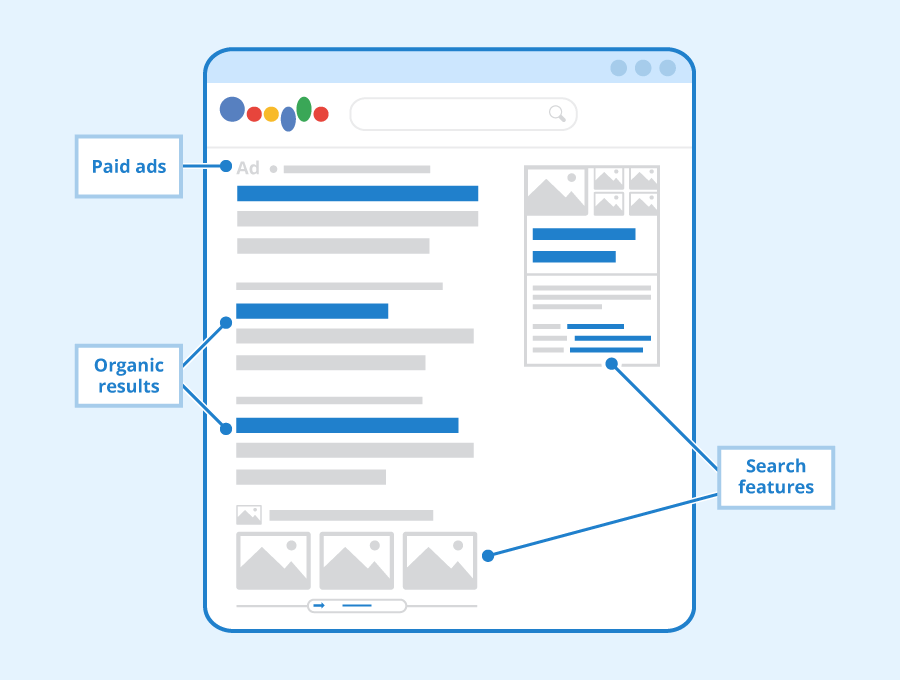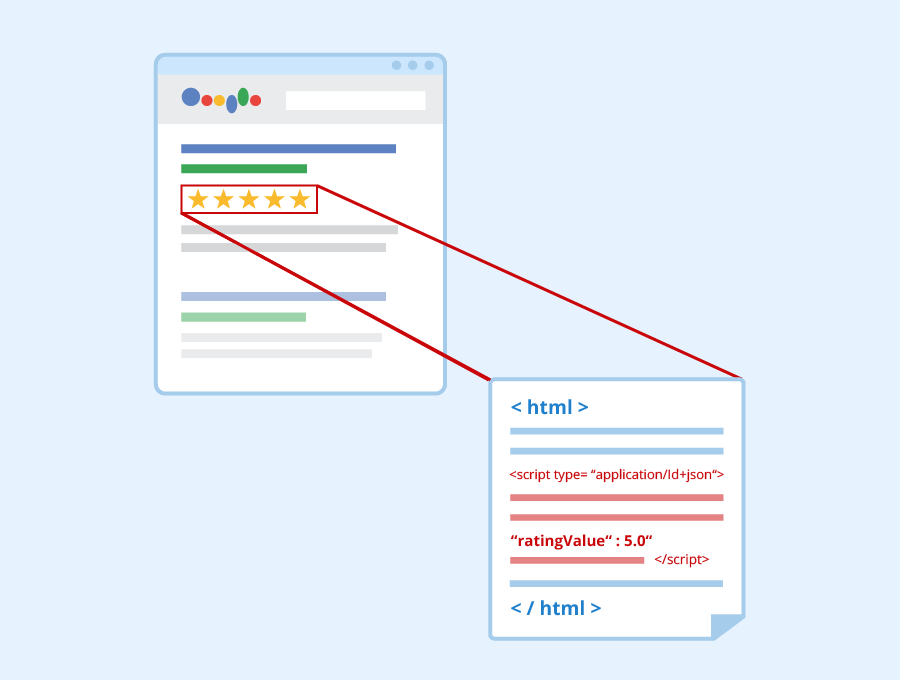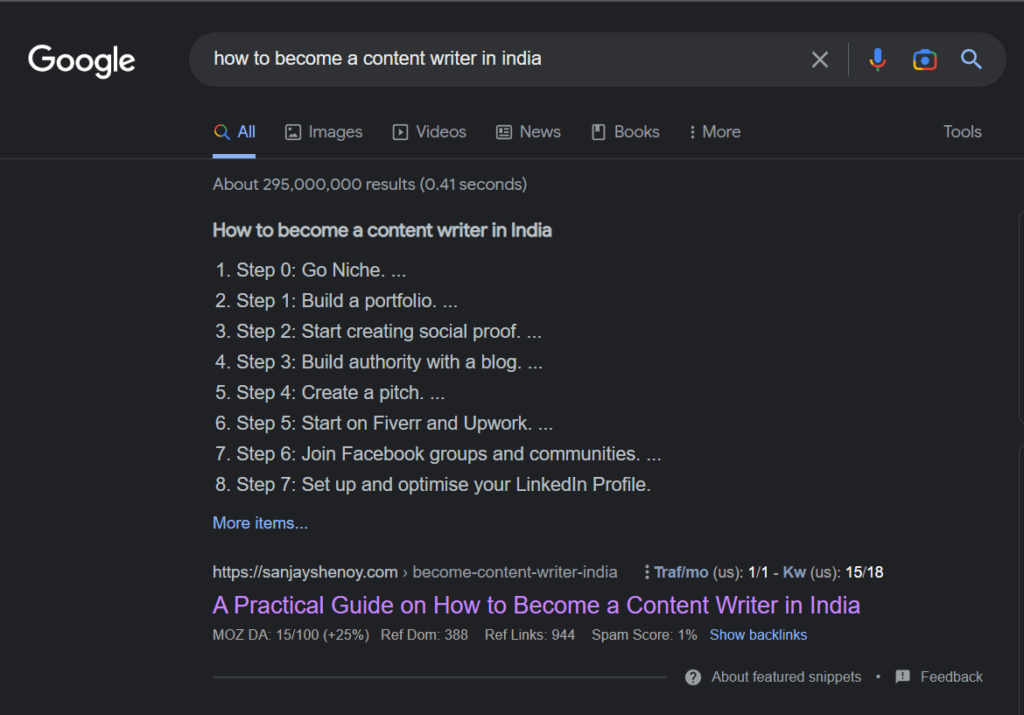
Do you sometimes go to a bakery and ask to sample the cookies and snacks before buying them?
Rich snippets do the same for your website.
Google gives out a sample of content from your web page for users to find on the Search Engine Results Page (SERP), so they can get a “taste” of what they will find if they click on the link; they are called snippets.
The snippets are like the colorful food on display, and they become rich snippets when they go breaking the monotony over and beyond the blue link, URL, and description and adding visual value to the displayed results.
Users will know whether that page provides suitable answers to their queries at a glance.
What do rich snippets mean for SEO? How and when to use them?
You will know all about it if you read this article.
What are rich snippets in SEO?
Rich snippets are visually appealing rich results in the SERP that provide valuable information answering user queries before they even click open the links. It is a SERP feature that is added using structured data.
Structured data or Schema Markup is the code that describes the type of content used in your web pages to Google in the language it can understand. This data is added to the HTML code of your web pages.
Before you freak out about coding, let me tell you that there are schema tools for WordPress that will do the work for you while you sit back and get rich (results).
Rich snippets include information like ratings, reviews, recipe cards, images, and bio-data, along with the link, URL, and meta-description.
It is selling the sizzle instead of the steak. Naturally, the visual impression attracts users to these results instead of the stereotypical plain results.
How are rich snippets useful for SEO?

The benefits of using rich snippets are beyond visual appeal.
That said, let me warn you, they do not contribute to your website ranking at least not directly. Even Google says so. But Google does not introduce a feature for anything. How else does it help with SEO?
1) The visual appeal encourages the visitor to click open the link hence increasing the click-through rate (CTR), attracting organic traffic like bees to honey.
2) You get a competitive edge by occupying more real estate in the SERP. When you are using attributes like reviews, price, show times and ticket availability of movies and events, or cooking time of recipes, your weblink is in a better position to be clicked on, even if it is ranking say, third or fourth if the top-ranking links do not provide the same data at a glance.
3) Speaking Google’s language helps it better understand your content and helps you expand the number of keywords to rank for. You can use structured data to communicate to Google what your content is about hence improving the range of keywords you are ranking for.
4) Structured data helps AMP-enabled websites improve their display and content.
5) Rich snippets are good for your EAT score. Google is always analyzing and assessing your website’s Expertise, Authority, and trustworthiness.
The relevance and the promise of delivering content that answers user queries build trust. It is a parameter defined by Google in its Search Quality Rating Guidelines which indicates the quality of content from trusted sources.
The rich snippet feature was introduced in 2009, has been evolving, and will continue to evolve beyond present times, and I am sure so will its benefits.
Who can use rich snippets?
Anybody can use rich snippets, but before you decide to use them, you need to see if you need them. They appear only for a certain type of content and are sometimes even limited by the device type. Some types are only displayed on the mobile web.
There are different schema types for content about people, events, businesses, products, books, movies, music, restaurants, and videos. If your website is not related to any of these content types, then using rich snippets is POINTLESS, so don’t!
Google monitors everything and is smart. If the information you are sharing is not relevant and helpful to the user query, the rich snippets will not display. If you add a markup where it is not supposed to be, you will be shut down. You are required to follow the Google guidelines for structured data.
What are the types of content that support rich snippets?
If you hit the schema.org page, you will find more schema types than you will ever need. But Google only supports the structured data of rich snippets of only a certain number of schema types.
Here are some of the most popularly used schema types for rich results:
- Article
- Product & offers
- Recipes
- Organization
- People
- Local business
- Breadcrumbs
- Video
- Events
- Rating/review
How do you optimize your content for rich snippets?

You can add schema markups using plugins on WordPress if you are not big on coding. If you have RankMath added to your website, there is nothing like it, as it does all the hard work for you.
You can optimize your content for rich snippets in the following steps:
- Add the markups suitable to your content using RankMath. You can also use Schema Creator for WordPress, WP Rich Snippets, and Google Data Markup helper.
- Test and validate using Google’s Structured data testing tool or Rich Results test. You can also use Site Audit by SEMrush.
- Monitor the performance using Google Search Console.
How long does it take for Rich Snippets to appear in SERPs? What to expect?
Google does not find markups right away, and it is not a guaranteed thing either. Rich Benci from SEJ says, “Rich Snippets are a privilege, not a right.”
So Google will wait to start displaying rich results using your structured data.
- It could take anywhere from 10 to 14 days for Google to analyze a newly introduced markup on a website.
- If all is well, Google displays the Rich Snippets for about five days on some pages before they disappear.
- Days later, they will appear again either on the same pages or the others. This process repeats several times.
- It may take up to 8 weeks for your site to win Rich Snippets, provided Google did not find any errors in its analysis.
Meanwhile, your patience is important here. If you get frustrated and keep tweaking your website now and then to “make it work,” it will only further delay the process.
Benci suggests waiting a couple of months for any results before you go about making any modifications to your site.
What does it mean if Rich Snippets do not appear in SERPs?

As already stated above, it is not guaranteed that Google will display Rich Snippets just because you implemented them.
You can still look out for the following parameters if they are not displayed yet, considering you have given its two months’ gestation.
- The structured data is not meet EAT standards (Google’s Search data quality standards)
- Your structured data is not relevant to the content type you are sharing. If the rich snippets are not improving the user experience, then they will not consider.
- Your structured data contains profanity. Keep it clean.
- There are errors in your structured data.
- If you have used multiple languages in markups.
- Google does not like it if you have used organization markup on every web page.
- Google does not see your content as reliable. Serve your site with HTTPS.
- If the content marked up is not visible to users and is hidden behind click events, Google sees it as misleading.
- If Google has yet to see that you have changed your content. Make Google re-crawl your page using Google Search Console.
You can test your rich snippets using the Structured data testing tool or the Rich Results Test.
What is rich snippet markup spam?
Creating deceiving, irrelevant, and misleading rich snippets amounts to spam. The most common one is manipulated ratings and reviews. Google can shut you down if that happens.
So keep your head down and follow the guidelines, and you are all good.
Bottom line

You don’t need to write code, you have testing tools to check for accuracy, and you have Google supported monitor; what more do you need? And if you are approaching it ethically, then you need not worry about getting flagged by Google.
Having rich snippets versus not having them is similar to having content with images vs. a plain wall of text. Visuals attract users and keep them engaged.
Go ahead and be the attention seeker!
What do you think about the techniques to get the rich snippets?
Let me know!


